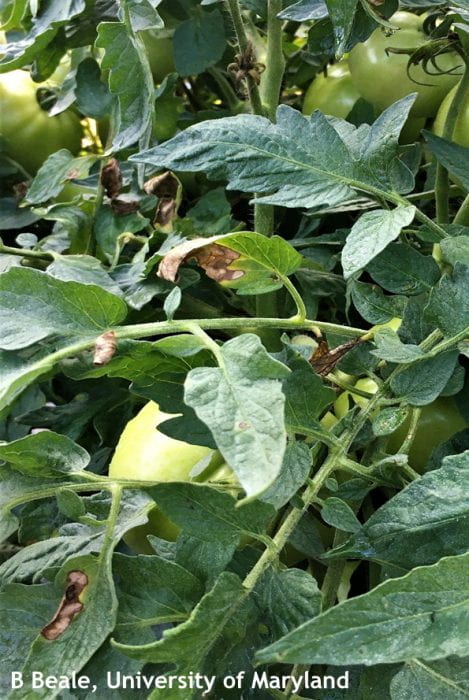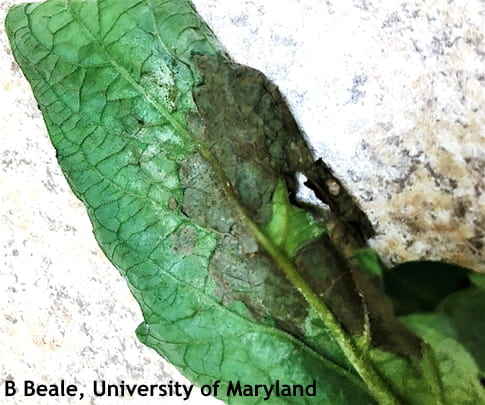Jerry Brust, IPM Vegetable Specialist, University of Maryland, jbrust@umd.edu; Ben Beale, St. Mary’s Co. Extension Agent, bbeale@umd.edu; Karen Rane, Plant Diagnostician, University of Maryland rane@umd.edu
A very unusual and seldom seen tomato foliar blight was found by an intrepid county educator in Southern Maryland last week. This disease is called Rhizoctonia Foliar blight caused by Rhizoctonia solani. The symptoms of Rhizoctonia foliar blight are brown necrotic lesions on blighted tomato leaves that are found in the top of the canopy (Fig. 1). These blighted leaves usually have a white mass of mycelia on the edge of dark (necrotic) lesions (Fig. 2) and can look very much like late blight. It is believed that the primary inoculum is aerially dispersed basidiospores. Other than that, little is known about this uncommon disease.
Symptoms appear during hot, wet weather in tomato plantings that have NOT had any fungicides applied to them. Fungicides, such as mancozeb, chlorothalonil and possibly others commonly used to protect tomato foliage from fungal diseases, are also reportedly effective against Rhizoctonia foliar blight. This is likely the reason that this disease is rarely seen, but it might become more common in the future in organic tomato systems. Growers, both conventional and organic, should keep watch for these foliar symptoms and seek a diagnosis, to make sure late blight is not overlooked.

Figure 1. Rhizoctonia leaf blight on tomato

Figure 2(1). Rhizoctonia foliar blight of tomato with white mycelia on edge of necrotic area

Figure 2(2). Rhizoctonia foliar blight of tomato with white mycelia on edge of necrotic area
